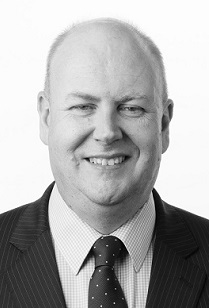Comment / Required viewing
I’ve been watching the BBC2 series Hospital, which followed staff and patients in the five hospitals of Imperial College Healthcare NHS Trust. It was absorbing viewing, sharing the highs and lows of patients and staff. Perhaps it should also be mandatory viewing, as it gave a brilliant insight into hospital life in general and the extreme pressures the service is facing.
A trust chief executive recently underlined for me the difference between 85% and 95% bed occupancy. It is not just that you are simply operating closer to your maximum capacity, but that at 85% you have freedom to act, while at 95% things start to break down, blockages appear and there can be big knock-on impacts.

The current debate about social care is vital. Delayed discharges continue to have a huge detrimental impact – the major increase in lost days highlighted in providers’ Q3 report is a real problem for the service. It’s bad for patients, more expensive than looking after them in more appropriate settings, and it eats into the service’s available capacity and headroom, forcing cancellations of elective work and wasted energy and effort dealing with all the consequences.
Perhaps more than this, it changes the debate on what is achievable in terms of productivity and transformation in the NHS. NHS England’s Five-year forward view made the point that patient demand on the NHS is partly a function of the availability of social care. The ability of the NHS to close the £30bn funding gap completely depends on funding in local government.
There may be a focus on declining performance in the A&E four-hour wait, but the plain truth is that A&E is a victim of its own success. There are few public services where you can just turn up in any of the 168 hours during a week, and waiting time performance shouldn’t detract from the work being done in these services in the face of such unrelenting demand.
The Q3 figures have thrown the spotlight back on finances and this year’s likely outturn. I think we might be okay this year as a whole health economy, but the settlement over the next few years suggests we will face significant challenges for some time to come.
The association recognises the hardship in the system. However, we need to keep ‘associating’ because it is by meeting together, sharing intelligence and learning that we move forward in our own organisations.
A key plank of our 2017-20 strategy will therefore be to keep price increases to a minimum and value to the maximum. This includes continued investment in member services and a relentless push in our policy and technical work. We want to keep building and growing to help members and reach out to other groups and professions.
I am also pleased to report that our pilot groups undertaking the qualification have found the content and approach rewarding and challenging. This is great news as we assemble the initial groups starting in May. There are still places left if you are still thinking it through.
Finally, our annual conference is now open for bookings. We are looking at shaking things up a bit, with more TED-style, punchier talks and more focus on innovation and value. Get in touch with any ideas as we put the programme together at [email protected]
Related content
We are excited to bring you a fun packed Eastern Branch Conference in 2025 over three days.
This event is for those that will benefit from an overview of costing in the NHS or those new to costing and will cover why we cost and the processes.